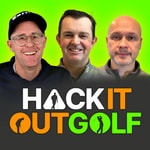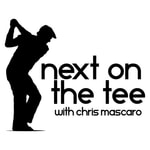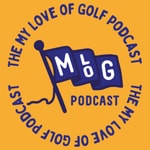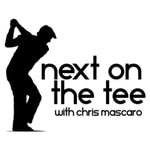Golf 247.eu: The Global Platform for Innovative Technologies and Teaching Concepts. – Détails, épisodes et analyse
Détails du podcast
Informations techniques et générales issues du flux RSS du podcast.

Golf 247.eu: The Global Platform for Innovative Technologies and Teaching Concepts.
Golf247.eu
Fréquence : 1 épisode/1j. Total Éps: 334

Classements récents
Dernières positions dans les classements Apple Podcasts et Spotify.
Apple Podcasts
🇨🇦 Canada - golf
10/08/2025#92🇬🇧 Grande Bretagne - golf
10/08/2025#38🇨🇦 Canada - golf
09/08/2025#80🇺🇸 États-Unis - golf
09/08/2025#86🇨🇦 Canada - golf
08/08/2025#66🇨🇦 Canada - golf
07/08/2025#55🇨🇦 Canada - golf
06/08/2025#48🇩🇪 Allemagne - golf
06/08/2025#87🇨🇦 Canada - golf
05/08/2025#28🇩🇪 Allemagne - golf
03/08/2025#84
Spotify
Aucun classement récent disponible
Liens partagés entre épisodes et podcasts
Liens présents dans les descriptions d'épisodes et autres podcasts les utilisant également.
See all- https://www.golf247.eu/
32 partages
- https://www.sportsbox.ai/
9 partages
- https://qrco.de/bdkMBR
5 partages
Qualité et score du flux RSS
Évaluation technique de la qualité et de la structure du flux RSS.
See allScore global : 58%
Historique des publications
Répartition mensuelle des publications d'épisodes au fil des années.
#143 Driver Fitting for a Mid-Handicapper.
Saison 2 · Épisode 143
vendredi 21 février 2025 • Durée 11:33
The Podcast outlines the fitting process for a golf driver tailored to a mid-handicap golfer struggling with a slice. Analysis of the golfer's swing and ball flight revealed high spin and an out-to-in swing path. The solution involved adjustments to the clubhead (Cobra), shaft (60X with reinforced tip), length (45 inches), and weight distribution to reduce spin and enhance control. The result was a significant improvement in distance and accuracy.
Key Insights:
This case serves as a detailed example of driver fitting, where the club is customized to compensate for the player’s weaknesses and optimize performance. The golfer exhibited two primary issues:
1. An out-to-in swing path causing a pronounced slice.
2. A club setup that amplified this error.
Analysis:
Swing Analysis:
The golfer's out-to-in swing caused a high ball flight with excessive spin and a strong slice to the right. This is common for players with powerful swings who struggle to square the clubface at impact.
Club Setup Analysis:
The golfer used a driver with a 10.5-degree loft and a stiff-flex shaft, which naturally produces high spin. Combined with their swing fault, this setup exacerbated the slice.
Solutions:
Club Adjustments:
- Shaft: Switched to an X-Stiff Flex shaft with reduced torque to improve control and minimize the slice.
- Clubhead: Opted for a Cobra driver known for forgiving off-center hits and reduced spin.
- Loft: Reduced loft to achieve a lower ball flight.
- Length: Shortened the shaft to 45 inches for greater control.
- Weight: Adjusted the clubhead weight to neutralize the ball flight.
- Grip: Modified the grip for better handling.
Training Recommendations:
- The golfer should work on correcting the out-to-in swing path for long-term improvement.
Results:
- Spin rate reduced from 4,000 to 2,900 RPM.
- Driving distance increased from 224 to 245 meters.
- Improved control and precision with drives.
Summary:
The combination of an out-to-in swing path and an unsuitable club setup caused severe slicing and loss of control. By tailoring the driver to the golfer's specific needs and reducing spin, these issues were addressed, leading to notable performance enhancements.
www.Golf247.eu#142 Strategic Golf Mastering Probabilities on the Course.
Saison 2 · Épisode 142
jeudi 20 février 2025 • Durée 04:55
The Podcast describes golf strategy, which focuses on minimizing the likelihood of mistakes rather than striving for the perfect shot. Hogan and mathematician Scott Fawcett analyze how golf is influenced by random events and develop the concept of the "Ice Cream Cone of Misses." This strategy aims to avoid the most detrimental errors by skillfully placing the target point, ultimately leading to lower scores. Professional golfers like Justin Thomas and Cameron Smith successfully apply this principle by steering potential misses into less risky areas. The Podcast argues that planning for mistakes, instead of hoping for perfection, is the key to success in golf.
The "Ice Cream Cone" model is a visual representation of the dispersion of a golfer's shots. Imagine standing in an open field and hitting 100 balls with each club in your bag. Some shots will be perfect, but most will veer left or right. Some will be well-struck, while others will catch the toe or heel of the club and travel shorter distances. When viewed collectively, these shots form an ice cream cone shape.
This cone represents the full range of left and right misses for a golfer at any distance. For professionals, the cone’s tip at about 300 yards is 70 yards wide. This means that most of a pro's drives over 300 yards will land either 35 yards left or right of the target. For amateurs, the cone is naturally wider. They might miss 35 yards in either direction at 250 yards. Regardless, all these shots form the "Ice Cream Cone of Misses," and this concept should guide your thinking on every shot, on every hole, every time you play.
The placement of the "Ice Cream Cone" on the golf course has a significant impact on strategy. Instead of focusing on the perfect shot, golfers—like professionals—should position their entire "Ice Cream Cone" of possible shots in relation to the hole and surrounding hazards.
- Pros often aim their “Ice Cream Cone” at areas that might seem unusual.
For example, this could mean aiming at a hole that points almost directly at trees.
The goal is to minimize the most harmful misses, even if this means the best shots are not ideally positioned.
In the example with trees, a pro might align the left side of their "Ice Cream Cone" with the fairway, even if it means some perfect shots might hit the trees.
- The benefit of this strategy is that the worst 30% of shots—normally landing in water and costing 1.5 strokes—are kept in play.
- At the same time, shots on the right side of the cone might be slightly worse but are still kept in play.
The same concept applies to approach shots. Instead of aiming directly at the pin, which is often located at the edge of the green, golfers should target the center of the green.
- This ensures that the majority of the "Ice Cream Cone" lands on the green, reducing the risk of costly misses into water or bunkers.
- Even if some shots end up farther from the hole, players still have good chances for par or better.
In conclusion, positioning the "Ice Cream Cone" is a strategic decision aimed at minimizing the impact of mistakes and improving overall scores. Rather than striving for the perfect shot, golfers should account for their entire range of shots and position the "Ice Cream Cone" to limit the consequences of errors.
www.Golf247.eu#135 Grip Pressure and Golf Performance
Saison 2 · Épisode 135
jeudi 13 février 2025 • Durée 04:41
The Podcast analyzes the grip pressure of golfers during their swing, distinguishing between tour professionals and amateurs. Professionals exhibit a dual pressure increase: one just before the transition and another before the strike, while amateurs show a continuous pressure rise until the highest point of the swing. The sharp increase in grip pressure at the beginning of the downswing in slicers is identified as the cause of the clubhead being thrown away. The study is based on pressure measurements during the golf swing. Grip pressure in the golf swing differs significantly between professionals and amateurs, particularly in terms of intensity and dynamics throughout the swing.
- Professional Golfers: According to the source, tour professionals apply a much higher grip pressure at setup, about twice as strong compared to their maximum capacity. It is estimated that an amateur would need to exert a grip pressure of about 8/10 to match the pressure of a professional at setup. During the swing, professionals exhibit a unique "double peak." They increase pressure shortly before the end of the backswing to stop the club and change direction. Then the pressure decreases until it rises again when reaching the position where the arm and shaft are parallel, relaxing again just before contact.
- Amateur Golfers: In contrast, amateurs, particularly slicers, start with very low grip pressure. This pressure gradually increases during the backswing until the end of the backswing. In the downswing, there is a sharp pressure increase over the top of the shaft, which, according to the source, results in the clubhead being "thrown away." Amateurs tend to continuously increase grip pressure, while professionals display a controlled pattern with pressure peaks.
In summary, professionals have a much higher initial pressure and vary this dynamically during the swing with two peaks. Amateurs, on the other hand, start with little pressure and continuously increase it until the end of the backswing, followed by a sudden increase in the downswing. These differing grip pressure patterns influence club movement and the resulting strokes. The progression of grip pressure among professional golfers during the swing is characterized by a dynamic pattern with two distinct peaks. Here is a detailed description based on the sources:
- Setup:Tour professionals begin with very high grip pressure in the setup, which is about twice as high as their maximum capacity. An amateur would need a grip pressure of approximately 8/10 to reach this pressure.
- Backswing: Just before reaching the end of the backswing, there is the first pressure increase. This increase is meant to stop the club and prepare the direction for the downswing.
- Pressure Decrease: After this first peak, the grip pressure decreases.
- Downswing: Upon reaching the position where the leading arm and shaft are parallel to the ground, there is a second significant pressure increase. This second peak is an important feature of the professional swing.
- Just Before Contact: Directly before contact, the grip pressure relaxes again.
In conclusion, professional golfers exhibit a pattern of high initial pressure and two distinct pressure peaks during the swing: one just before the end of the backswing and another during the transition to the downswing, followed by relaxation just before contact. This pattern is markedly different from that of amateurs, who continuously increase pressure throughout the swing and show a massive pressure increase in the downswing.
#48 (Putting) Attack Angle, Low Point & Ball Launch.
Saison 1 · Épisode 48
lundi 18 novembre 2024 • Durée 14:53
The Podcast explaine Various factors in the putting setup can influence the launch and attack angles. Here are some examples mentioned:
- Ball Position: The ball's position relative to the sternum can affect the attack angle. A ball positioned too far forward can lead to a steeper attack angle, while a ball too far back can cause a shallower angle. An optimal setup places the ball under the left eye or slightly behind.
- Weight Distribution: Uneven weight distribution can also impact the attack angle. Excess weight on the right foot can cause the body to lean backward during the stroke, encouraging a steeper attack angle.
- Putter Height: The putter's height above the ground in the address position also has an impact. A putter held too low forces the player to raise it during the stroke to avoid early ground contact, leading to a steeper attack angle and a low point further from impact.
- Hand Movement: Excessive hand movement during the stroke can influence both launch and attack angles. Pushing hands toward the ball can produce a steeper attack angle and a lower launch.
- Putter Fitting: A putter that isn’t properly fitted to the player can lead to undesirable launch and attack angles. Players often subconsciously compensate for the putter’s characteristics, resulting in an inefficient and inconsistent putting stroke.
All these factors interact, making it challenging to isolate the effects of a single factor. Adjusting one aspect of the setup can affect others, potentially leading to unintended results. Working with an experienced coach is recommended when analyzing the putting setup and optimizing launch and attack angles.
- Golf247.eu
#47 Sway in the Golf Swing.
Saison 1 · Épisode 47
dimanche 17 novembre 2024 • Durée 22:02
The Podcast covers the topics of "Sway" and "Sway Gap" in the golf swing. "Sway" describes the linear movement of the pelvis and chest during the swing, shifting toward or away from the target. "Sway Gap" refers to the difference in lateral movement between the pelvis and chest in relation to the target, measured using the Sportsbox AI software. The webinar discusses the significance of Sway Gap for different grip styles, the differences between professionals and amateurs, and how Sportsbox AI improves swing analysis.
Impact of "Sway Gap" on the Golf Swing and the Role of Grip
In the golf swing, the Sway Gap represents the horizontal distance between the chest and pelvis during different swing phases. This spacing, comparable to the X-Factor in rotation, reveals weight transfer patterns and can be influenced by the golfer’s grip.
Influence of Grip on Sway Gap
- Strong Grip: Golfers with a strong grip (right hand rotated clockwise on the club) often create a larger Sway Gap in the backswing, moving the upper body more toward the trail side while the pelvis stays back.
- Weak Grip: Golfers with a weak grip (right hand rotated counterclockwise) tend to show an inverse relationship in the backswing. The upper body shifts less toward the trail side, sometimes even slightly toward the target, while the pelvis moves toward the trail side.
Effect of Sway Gap on Swing
- Weight Transfer Timing: A larger Sway Gap in the backswing may delay weight transfer to the lead foot, while a smaller Sway Gap can promote an earlier transfer.
- Swing Path: The Sway Gap can affect the swing path. A large Sway Gap in the backswing with a strong grip may lead to a draw or hook, whereas a small Sway Gap with a weak grip can lead to a fade or slice.
- Face Angle: Sway Gap influences the clubface angle at impact. A larger Sway Gap in the downswing, with the upper body trailing the pelvis, may result in a steeper angle of attack, while a smaller Sway Gap can produce a shallower angle.
Optimizing the Sway Gap
- Grip Adjustment: The Sway Gap should be adapted to the golfer’s grip. Golfers with a strong grip should aim for a larger Sway Gap in the backswing, while those with a weak grip may benefit from a smaller Sway Gap.
- Early Weight Transfer: For most golfers, particularly amateurs, early weight transfer to the lead foot is recommended. This can be achieved by actively moving the pelvis toward the target during the transition.
- Dynamic Push-Back: In the downswing, a dynamic "push-back" of the upper body can increase the Sway Gap, leading to a shallower angle of attack.
In summary, Sway Gap is a critical element of the golf swing that is influenced by grip and affects weight transfer, swing direction, and clubface angle. Analyzing and optimizing the Sway Gap can help golfers improve their technique and achieve more consistent results.
#46 TaylorMade and Quintic have jointly opened a putting training center at Haikou Mission Hills Golf Club.
Saison 1 · Épisode 46
samedi 16 novembre 2024 • Durée 06:20
TaylorMade and Quintic have jointly and opened a putting training center at Haikou Mission Hills Golf Club.
This center provides golfers and professionals with access to cutting-edge putting technology, including the Quintic Ball Roll Analysis System, which offers detailed analysis of each putt. Players can test TaylorMade putters and improve their technique using Quintic’s biomechanics software. The collaboration aims to advance golf putting technology in the Asia-Pacific region and enhance services for golfers and professional athletes.
- To achieve these goals, the two companies have opened a putting training center at Mission Hills Haikou Golf Club.
- The center is equipped with Quintic’s latest technology, including the Quintic Ball Roll Analysis device and Quintic Biomechanics Software.
- These technologies allow for in-depth analysis of each putt, providing players with precise guidance and feedback.
- Through professional analysis and the guidance of the software, golfers can better understand the biomechanics of putting and improve their technical skills.
- The Quintic Overhead Tracker System monitors the entire path of the golf ball during putting, delivering key data such as trajectory, speed, spin, and angle.
- Players at the training center can also test TaylorMade’s latest putters to find the most suitable club type for their needs.
In summary, the partnership between TaylorMade and Quintic is designed to offer golfers of all skill levels a better putting experience through the use of advanced technology and professional support.
#45 (Putting) Ball Launch and Flight.
Saison 1 · Épisode 45
vendredi 15 novembre 2024 • Durée 11:45
The podcast focuses on putting, with the speaker explaining the importance of launch angle and flight angle in putting.
The launch angle refers to the angle at which the golf ball leaves the ground, while the flight angle describes the angle at which the ball travels through the air.
The speaker argues that, for optimal putting performance, it is essential to make these two angles as similar as possible.
He presents various studies and live demonstrations showing how launch and flight angles affect putt performance. Additionally, speaker explains the factors that influence both angles, such as the static loft of the putter, strike position, the quality of the putting surface, and ground characteristics.
This Podcast is designed to give golfers a deeper understanding of the mechanics of putting and to help them improve their putting performance.
The Impact of Static Loft on Ball Flight in Putting
- The static loft of a putter significantly affects ball flight.
Here are the key points highlighted in the sources:
- Static Loft Definition: Static loft is the angle of the putter’s face relative to the ground. This angle affects how the ball “pops” up upon impact.
- Low Static Loft: A lower static loft causes the ball to interact more with the surface before lifting. This can result in more backspin and unpredictable rolling behavior.
- Higher Static Loft: A higher static loft reduces surface interaction and results in a quicker transition to forward roll, promoting smoother ball flight and better distance control.
- Ideal Effective Loft: The ideal effective loft for putting is around 2 degrees, allowing the ball to rise out of its depression in the grass while maintaining a consistent roll.
- Effective Loft: Effective loft combines static loft and the shaft angle at impact. A forward-leaning shaft adds loft, while a backward-leaning shaft reduces it.
- Customization: It’s essential to adjust the static loft to the shaft angle and the player’s putting technique to achieve optimal effective loft.
- Lack of Awareness: Many golfers are unaware of their putter's static loft. It’s recommended to know this value and consider it during putt analysis.
The sources also recommend using tools like a ruler or the back of a mirror to test the influence of the putting surface on ball flight. By practicing putts from a flat surface and then from the actual putting surface, golfers can gain valuable insights into the impact of surface interaction on their putts.he Puttalyze app follows a unique approach by integrating physical principles and detailed parameters into its calculations.
#44 How to Coach with SportsBox.
Saison 1 · Épisode 44
jeudi 14 novembre 2024 • Durée 17:00
The Podcast introduces Sportsbox technology, a tool that enables coaches to assess and improve golfers' swing mechanics using video recordings and 3D analysis. The Podcast explained how to use Sportsbox to analyze specific movements, incorporate training aids, and set individual goals for players. He also showcases the integration of Sportsbox with other technologies like Foresight launch monitors. Participants can ask questions and learn more about how Sportsbox works.
Here are some ways Sportsbox helps coaches grow their business:
- Enhanced Communication with Students:
Sportsbox offers a home feed where coaches can communicate with students, like posts, and comment, which can encourage practice and create a "sticky" environment that keeps students engaged. Notifications alert coaches when students reach out, ask questions, or post swings, allowing quick responses. Coaches can also send bulk emails via the Sportsbox web portal.
- Monetization Opportunities:
Coaches can purchase student credits through Sportsbox and assign them to players. These credits can be integrated into lesson fees and used to upgrade students from a free account to a 3D player account, where they can record unlimited swings in the app. Since these swings are sent directly to the coach, they can comment and encourage students to return if they face challenges.
- Improved Training Insights:
Sportsbox uses single-camera motion capture technology to convert 2D videos into 3D data. Coaches can use the app to track metrics like pelvis and chest rotation, sway, and sway distance. The app also includes PGA and LPGA tour ranges for each position, allowing coaches to compare students' swings to those of professional golfers. Coaches can incorporate training aids like the Downshift Board or the Golf Forever training device to help students improve specific body movements.
- Student Motivation:
Sportsbox allows coaches to set goals for students focused on specific metrics and positions. The app tracks student progress toward these goals, which can encourage practice. Coaches can also use a comparison mode to show a student’s swing before and after using specific training aids. Additionally, the app’s monitor mode lets coaches demonstrate how a student’s body movements affect their ball flight.
- Credibility and Brand Awareness:
Sportsbox is used by coaches, tour players, and champions like Bryson DeChambeau. Using Sportsbox in lessons can enhance coaches' credibility with potential clients. Promoting the use of Sportsbox, such as sharing content on social media, can also help coaches increase brand awareness and attract more clients.
In addition to these benefits, Sportsbox offers training and certification for coaches. They can earn a Level 1 certification, which includes three PDR credits. This certification can help coaches improve their skills and further strengthen their credibility with potential clients.
It's important to note that the sources do not specifically discuss how coaches can use Sportsbox for business promotion or marketing. Coaches may consider using social media platforms or other marketing channels to highlight the advantages of using Sportsbox in their lessons and reach potential clients.
#43 The Confederation of Professional Golf (CPG) and Sportsbox AI 3D.
Saison 1 · Épisode 40
mercredi 13 novembre 2024 • Durée 17:17
The Confederation of Professional Golf (CPG) and Sportsbox AI have partnered to equip golf professionals with innovative technologies and analytical tools. This partnership gives golf coaches access to the Sportsbox 3D Pro App, which provides precise swing analysis, as well as discounts on certification courses. Additionally, golf pros can access educational content and exclusive learning opportunities via the CPG’s Learning Institute Hub to further develop their skills. The partnership highlights both organizations' commitment to fostering growth and innovation in the golf community.
The collaboration between CPG and Sportsbox AI offers a range of benefits designed to enhance golf professionals' training, educational, and coaching experiences.
Benefits of the Partnership
- Enhanced Performance Analysis: Golf professionals receive significant discounts on the Sportsbox 3D Pro App, an innovative tool that uses advanced 3D technology to offer precise insights into players' swings. This enables customized coaching and improved on-course results.
- Advanced Training Certifications: The partnership also offers reduced rates for Sportsbox AI training certifications. These certifications provide the latest skills and knowledge to improve coaching and offer clients better guidance.
- Valuable Educational Opportunities: Golf pros have access to valuable educational resources through the CPG’s Learning Institute Hub platform, including exclusive online and in-person learning opportunities. This collaboration ensures that golf professionals can continually develop their expertise and make the best use of innovative technologies and methods in golf.
- Support for Business Growth: By enhancing their coaching skills and expanding their knowledge, golf professionals can improve their services and attract more clients. The partnership supports golf coaches in expanding their business opportunities and increasing their success.
In summary, the partnership between CPG and Sportsbox AI offers golf professionals access to cutting-edge technology, improved training options, and valuable educational resources. These benefits enable them to enhance their coaching skills, increase student engagement, and ultimately expand their business and learning opportunities.
#42 Understanding the X-Factor.
Saison 1 · Épisode 42
mardi 12 novembre 2024 • Durée 12:41
In this podcast episode https://lnkd.in/eqmAN2BB, the biomechanics of the golf swing, including the “X-Factor” and “X-Factor stretch,” are explained as key elements for increasing clubhead speed. The podcast covers the scientific fundamentals, while the YouTube video linked below demonstrates practical applications with examples from professional players like Rory McIlroy and Patty Tavatanakit.
Using the X-Factor in the Golf Swing to Increase Clubhead Speed
The X-Factor in the golf swing, which is the rotation of the chest relative to the pelvis, plays a crucial role in generating clubhead speed. Here are some key points on how to utilize the X-Factor effectively:
- Basics of the X-Factor: The X-Factor is created by the rotation of the shoulders relative to the hips during the swing. It is crucial not only at the top of the backswing but throughout the entire swing. The X-Factor increases muscle tension and range of motion, leading to a more powerful swing.
- X-Factor and X-Factor Stretch: The X-Factor stretch refers to the increase in the X-Factor from the point at which the pelvis reverses its rotation up to its maximum in the early downswing. Both the X-Factor and the X-Factor stretch are essential for generating clubhead speed.
- Muscle Physiology and X-Factor: The stretch of the muscles through the X-Factor stretch utilizes the stretch-shortening cycle (SSC) principle. The SSC enables faster and more powerful muscle contraction. The stretching of the abdominal muscles through the X-Factor places them in a pre-stretched position, enhancing force production.
- Differences Between Men and Women: Women generally have a larger X-Factor and X-Factor stretch than men due to greater flexibility. Men, however, tend to have more upper body strength. LPGA players compensate for lower strength with greater precision and swing efficiency.
- Training the X-Factor: Exercises that promote hip rotation while the upper body remains in the backswing are useful for training the X-Factor stretch. Step drills, where the player lifts their left foot off the ground and moves it toward the right foot while rotating the hips, can simulate this movement. Drills where the player completes the backswing with the left arm parallel to the ground and then tries to hit the ball as far as possible encourage hip rotation and the use of the lower body. Younger golfers without much strength should focus on strengthening their core to protect the spine and generate more power in the downswing. It's important for young golfers to learn to control the X-Factor and engage their core during the downswing to avoid excessive bending to the right.
- Additional Considerations: The ratio of pelvis to chest movement (sway) also plays a role in generating clubhead speed. Both male and female golfers can benefit from optimizing this sway ratio. The ability to release the energy stored in the X-Factor stretch is critical for clubhead speed. Core strength is essential to transfer this energy efficiently to the club.
The sources provide detailed insights and analyses of the X-Factor in the golf swing, emphasizing muscle physiology, biomechanical principles, and the differences between male and female golfers. By understanding and implementing these concepts, golfers of all ages and skill levels can optimize their swing and increase their clubhead speed.







